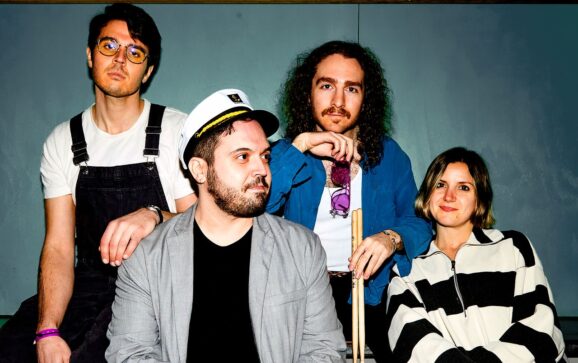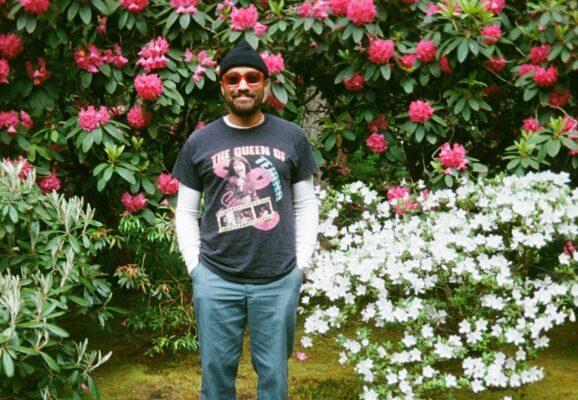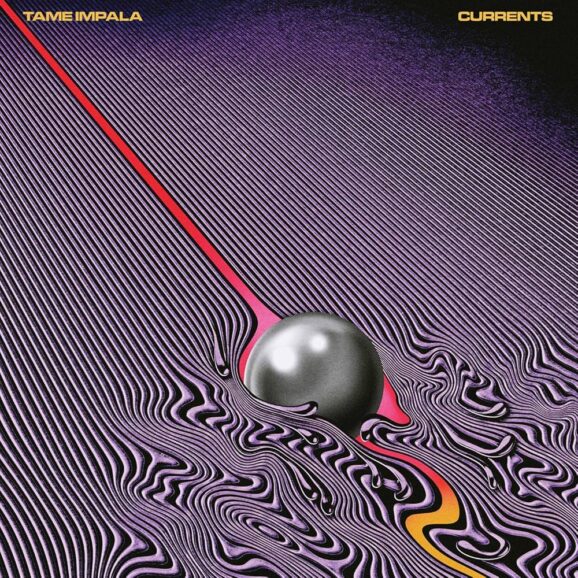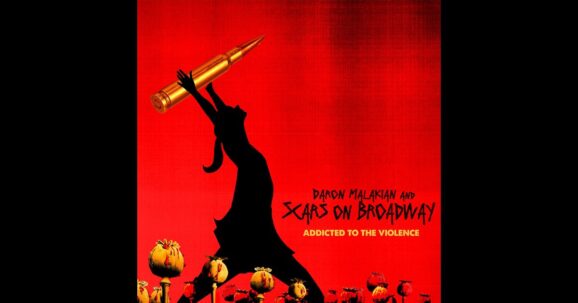Jay Farrar talks like his best songs sound; understated, wholly without ambivalence, with nary a wasted word. He did use the words “liberating” and “inspiring” more than once in this interview, but that should come as no surprise, because, since the demise of Uncle Tupelo, the seminal alt-country band Farrar co-led with Wilco’s Jeff Tweedy, the songwriter has followed his muse with great loyalty, whether in the direction of Son Volt, his solo work, one-off collaborations such as Gob Iron and New Multitudes, or authoring a book (Falling Cars and Junkyard Dogs).
But unlike his former partner, who’s taken Wilco in more experimental realms, Farrar has delved more deeply and broadly into the roots of a style that gave birth to what’s now known as Americana and specifically alt-county, weaving strains of rock and roll, classic country and folk music together in such a seamless way that it’s impossible to miss the shared influences. Along those lines, Son Volt’s debut album Trace – which is celebrating its 20th anniversary with a deluxe two-disc reissue coming via Rhino Records on October 30th – was a cutting edge record in both its electric and acoustic guitars, especially in its newly-remastered form.

Its successor, Straightaways, further streamlined Tupelo’s unselfconscious reach to such disparate sources as The Stooges and the Carter Family. Subsequent albums like The Search were far more polished, but still aligned with their predecessors, while later records on the revered Rounder Records label, offered a homecoming of sorts to Farrar. American Central Dust is as discerningly topical as it is stylistically authentic, and Honky Tonk connects back to the final cut on the live portion of this new Trace reissue with a jaunty version of Del Reeves’ “Looking at the World Through a Windshield.”
Farrar’s solo efforts such as Terroir Blues/The Dogtown Sessions are only a little less arresting, while his stellar work such as 2006’s Gob Iron with Varnaline’s Anders Parker led to a wider collaboration of those kindred spirits in homage to Woody Guthrie, New Multitudes, including My Morning Jacket’s Jim James. A creative partnership with Death Cab for Cutie’s Ben Gibbard resulted in the soundtrack for a documentary film devoted to author Jack Kerouac, One Fast Move or I’m Gone. All of this is an illustration of the continuity of Jay’s career he reaffirmed in our recent conversation.
How did the idea come about to put together this Trace package with the remastered album, extra tracks and the live show? Was it your idea, the label’s or somebody else?
The idea came about during conversations with management and a guy I work with named Josh Grier who’s in contact with the folks at Rhino, who were into the idea. For the last fifteen years, I’d been aware of those live analog tapes of Son Volt, one of which eventually became the second CD in this package. The idea of releasing it’s been around since about 2000 because we thought the tapes would sound pretty good (laughs). It was a pretty circuitous process to finally get the tapes transferred to a format we could use: the “Live at the Bottom Line” show was recorded with a mobile recording truck, which, at the time, used very large analog tapes with a specific type of machine and a specific type of noise reduction. So, not to make it an over-long story, we found a studio in New York that could do the transfers. When we finally heard the finished product, we thought we had to put it out.
[youtube id=”ZNTQ2DuJKtU?list=PL4DF9BCAE720958FF” width=”630″ height=”350″]
I was going to ask how the choice of that show came about, but you anticipated my question and covered it pretty thoroughly.
As of now, that’s the only one I know of in existence that was recorded with a mobile recording truck and there’s some question what mobile recording truck actually recorded it. I remember being inside the Rolling Stones’ mobile recording truck and I did some research online and that vehicle was in New York in 1996, so it’s either this show or another show—there must be another tape!
Well, that one will be good for the fiftieth anniversary edition right?!
If we live that long!
I’m going to stick around and see. The anticipation will be some inspiration toward that end!
I do want to find that other one, having been inside the Rolling Stones’ mobile recording truck with the lips logo on the doors and everything.

Photo: Daniel Corrigan
I wonder how much atmosphere from the Exile on Main Street sessions was inside there when you were in it, must’ve been really spooky!?
It was pretty inspiring.
Reading about the Trace reissue, I took note how you were involved in the remastering of the original album, so I wanted to ask how you got involved with that process?
Remastering is a way to enhance and bring out some of the elements of the recording that were perhaps not as audible on the original master. It’s also a chance to rethink the project in terms of what instrumentation might be pulled up a little bit. There’s also some newer mastering equipment to use, so it seemed like a logical thing to do, especially because I felt there were some readily apparent sonic disparities. The original was recorded in two different studios with two different mixing engineers, so remastering is a way of making it more ‘even’ sounding.
I would imagine that would inject a great deal of uniformity to the newly-finished sound. Not sure how long it took to get that done, but it sounds like you had a good idea what you wanted to accomplish with it Was it a difficult process to do the remastering and did you enjoy it?
I enjoyed the experience. It took perhaps a week or two, but, like I said, it’s definitely a good way to rethink what you want the end result of the product to sound like. And I’m happy with it!
How did you go about picking out the demos and alternate versions that fill out the first disc?
I found some old cassettes in a shoebox of four-track demos that I’d done and as it seemed like something extra should be added to the reissue (along with the original album and the concert). The demos provide a contrast to the studio versions: one can see the development of the songs from the demo stage to the studio takes. By the time you hear the final versions, you can hear the correlation, like on “Windfall”: the lyrics talk about steel guitar and in the studio we did it with an actual steel player not the simulated sound like I used.
Listening to the tracks in sequence the other day, when I hit those demos, it was interesting to hear how well thought out they were; they reminded me of some of the recordings Pete Townshend did for the Who where he played all the instruments before he began to work with the band on the songs. Did you play everything yourself on those demos?
Yeah, I did. (laughs). The instruments I played were various guitars and a shaker.
In going through those demos, were you prompted to think about how Trace was originally recorded? Was that an easy process?
The stages leading up to the recording in Minnesota involved me driving up from New Orleans where I was living. It was a liberating time for me personally and creatively; I was living in a new city, making long drives across the country, and a productive period in terms of writing songs too. There’s that reference in “Windfall” to ‘catching an all-night station’: there was an AM radio station I was picking up out of New Orleans that I could get almost all the way up to Minnesota, full of classic country music.
You just set up a nice segue to something I did not want to let go unmentioned. As I was listening to the Bottom Line show, the last track is Del Reeves’ “Looking at the World Through a Windshield”, which sounds like a very direct connection to the latest Son Volt album Honky Tonk. Do you sense the continuity in your career within Son Volt even though you’ve done more than a fair share of solo and collaborative work along the way?
Yeah I see what you’re saying. There is some sense listening to that song that I was ecstatic playing that type of music.
[youtube id=”API6A9QcvVg” width=”630″ height=”350″]
You must feel quite inspired to this day to be doing that because ‘Americana’ such as it is doesn’t always sound that authentic.
(laughs) Well, that’s the kind of music that inspires me. Right now, I’m getting out my vinyl collection and dusting off my turntable, so I can listen to old Hank Williams 78’s.
That’s really going back to the roots of things right?
There’s definitely inspiration to be found there.
Given the variety of work you’ve done, what are your plans for Son Volt in the imminent future, if there are any at all?
That remains to be seen. I’ve recorded some songs that could be for a solo record and I’ve also written ten or twelve songs that could fit into the framework of being a Son Volt record. Hopefully by this time next year, they will all have become fully realized as I’m just starting the process of fleshing out songs. We’ll see where they go from there.
The germination of the process evolves from that point I take it?
Whether I want it to be Son Volt or not, it depends on what the song needs. As I get more into the mechanics of the songs, it’s determines which direction I should go, solo or band.
Have you ever sat down and written material purposely for a Son Volt album?
I have, particularly the early ones, but once I began doing solo records, there was more room for variance.
I didn’t know how much room you left for serendipity or epiphany when you work.
There’s definitely room for that!
Son Volt‘s 20th anniversary deluxe reissue of Trace is out October 30th on CD and vinyl on Rhino Records.
JAY FARRAR PERFOMS SONGS OF TRACE – 20TH ANNIVERSARY TOUR DATES:
OCTOBER
28 The Birchmere – Alexandria, VA
29 Ardmore Music Hall – Ardmore, PA
30 City Winery – New York, NY
NOVEMBER
13 Texas Union Theater – Austin, TX
14 The Kessler – Dallas, TX
DECEMBER
2 The Troubadour – Los Angeles, CA
3 Slim’s – San Francisco, CA
5 Aladdin Theatre – Portland, OR
6 Tractor Tavern – Seattle, WA












2 Responses
Please come back to the Cincinnati area!!